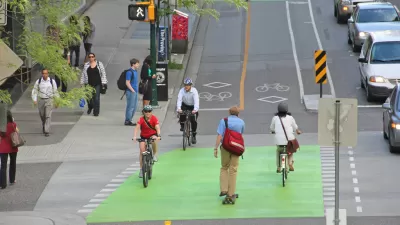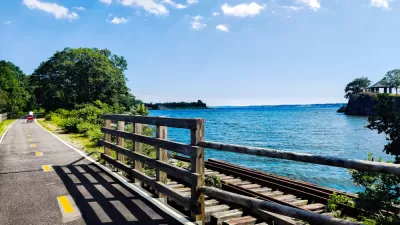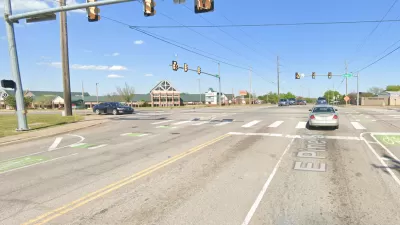Bike infrastructure is a source of political controversy, even in cities where biking is already popular.

In Vancouver, British Columbia, about one in every ten commuters bikes to work. Despite that relative success compared to most North American cities, residents in the city are debating the best ways to build bike infrastructure.
"Urban-planning and transportation experts have long feted Vancouver’s extensive system of bike-friendly side streets as a cheap and uncontroversial way for bike-resistant North American cities to create the infrastructure that gets people out of their cars and onto two wheels," according to an explanation of one side of the debate by Mike Hager.
But the side street approach is only part of the equation, writes Hager:
Networks of traffic-calmed streets can be an important – and politically feasible – middle step for a city to make cycling safer and easier for many, but, ultimately, separated lanes on busy streets are the key to getting more commuters peddling to work, according to Brent Toderian, Vancouver’s former director of planning.
Protected bike lanes, however, have a tougher political hill to climb in Vancouver, just as in other cities. According to Hager, for instance, conservative political and media figures have fomented a "bikelash" campaign against protected bike lanes.
FULL STORY: Vancouver’s cycling-friendly side streets seen as a key step forward for North American cities

Alabama: Trump Terminates Settlements for Black Communities Harmed By Raw Sewage
Trump deemed the landmark civil rights agreement “illegal DEI and environmental justice policy.”

Planetizen Federal Action Tracker
A weekly monitor of how Trump’s orders and actions are impacting planners and planning in America.

Why Should We Subsidize Public Transportation?
Many public transit agencies face financial stress due to rising costs, declining fare revenue, and declining subsidies. Transit advocates must provide a strong business case for increasing public transit funding.

Understanding Road Diets
An explainer from Momentum highlights the advantages of reducing vehicle lanes in favor of more bike, transit, and pedestrian infrastructure.

New California Law Regulates Warehouse Pollution
A new law tightens building and emissions regulations for large distribution warehouses to mitigate air pollution and traffic in surrounding communities.

Phoenix Announces Opening Date for Light Rail Extension
The South Central extension will connect South Phoenix to downtown and other major hubs starting on June 7.
Urban Design for Planners 1: Software Tools
This six-course series explores essential urban design concepts using open source software and equips planners with the tools they need to participate fully in the urban design process.
Planning for Universal Design
Learn the tools for implementing Universal Design in planning regulations.
Caltrans
Smith Gee Studio
Institute for Housing and Urban Development Studies (IHS)
City of Grandview
Harvard GSD Executive Education
Toledo-Lucas County Plan Commissions
Salt Lake City
NYU Wagner Graduate School of Public Service





























